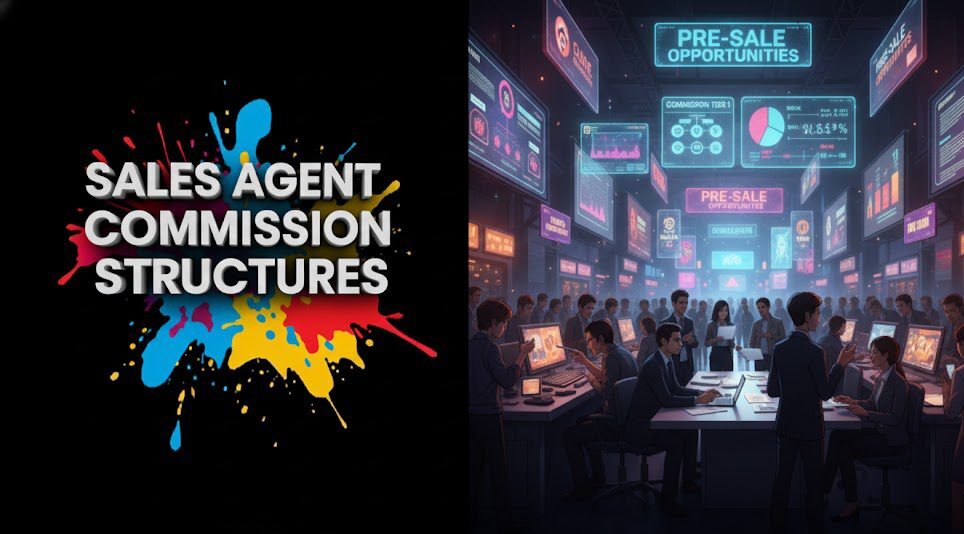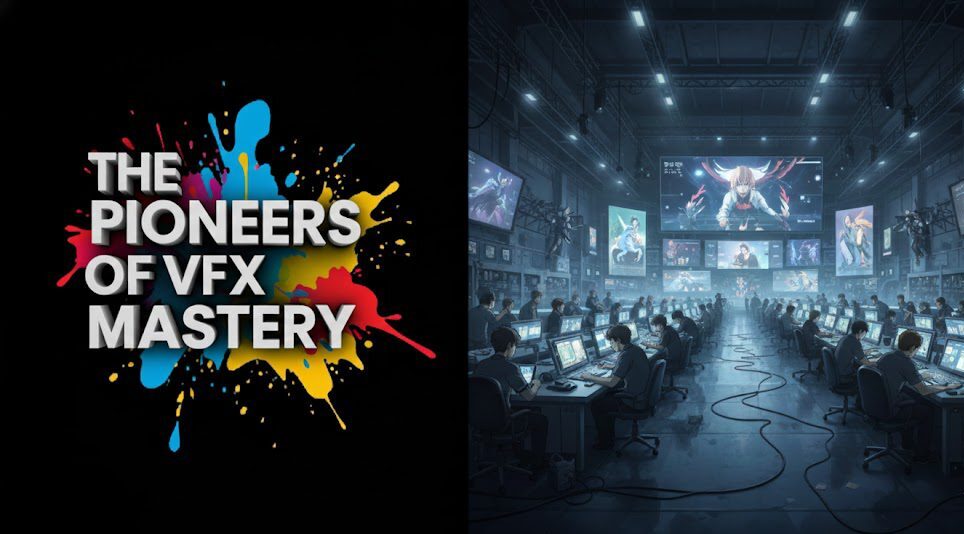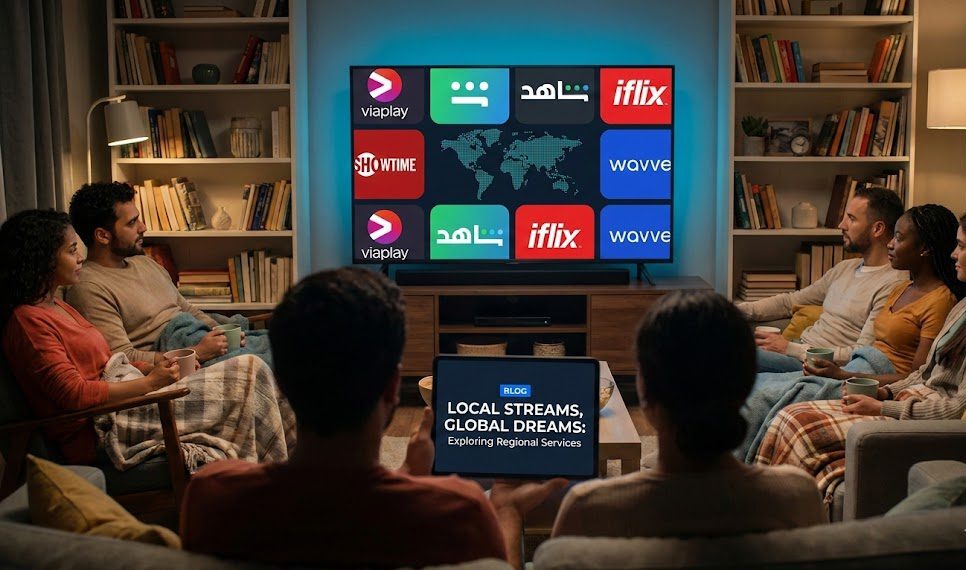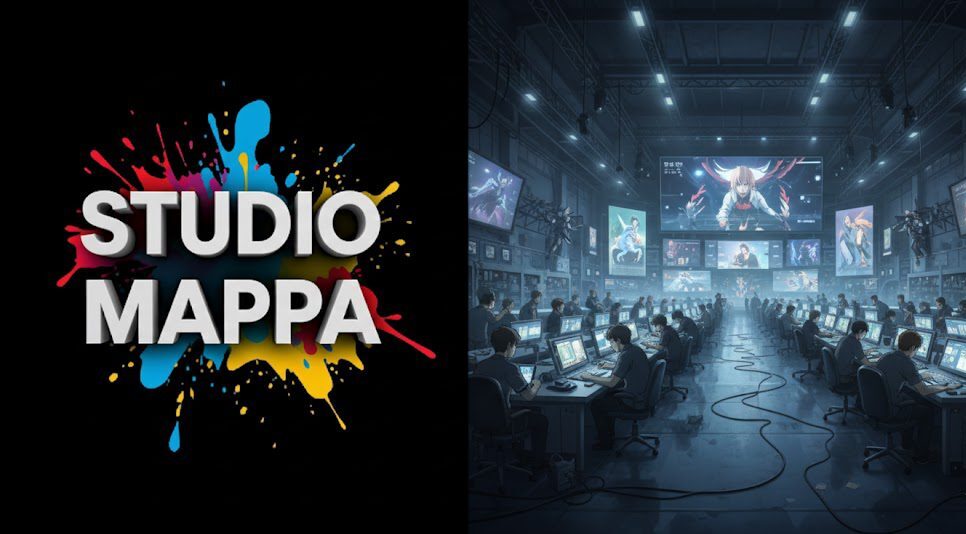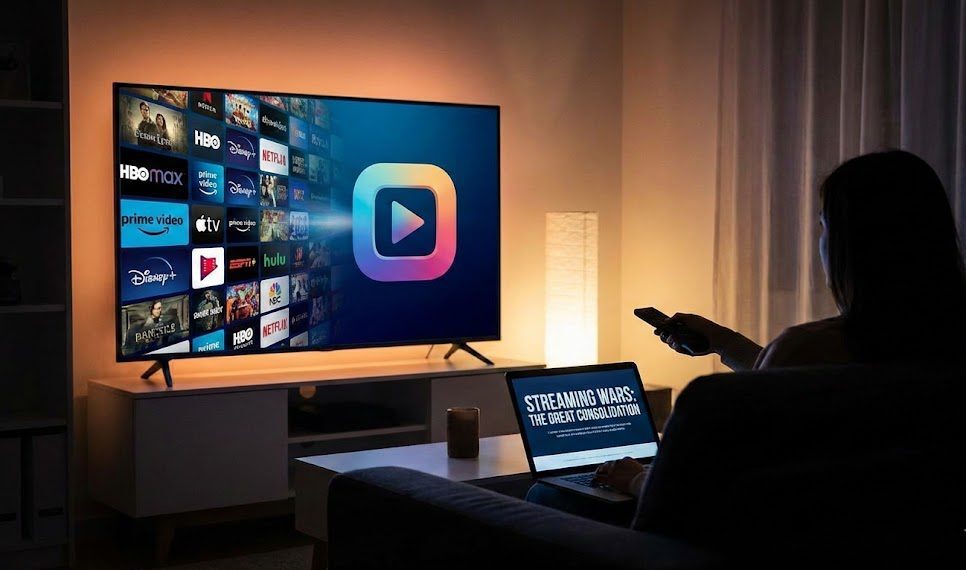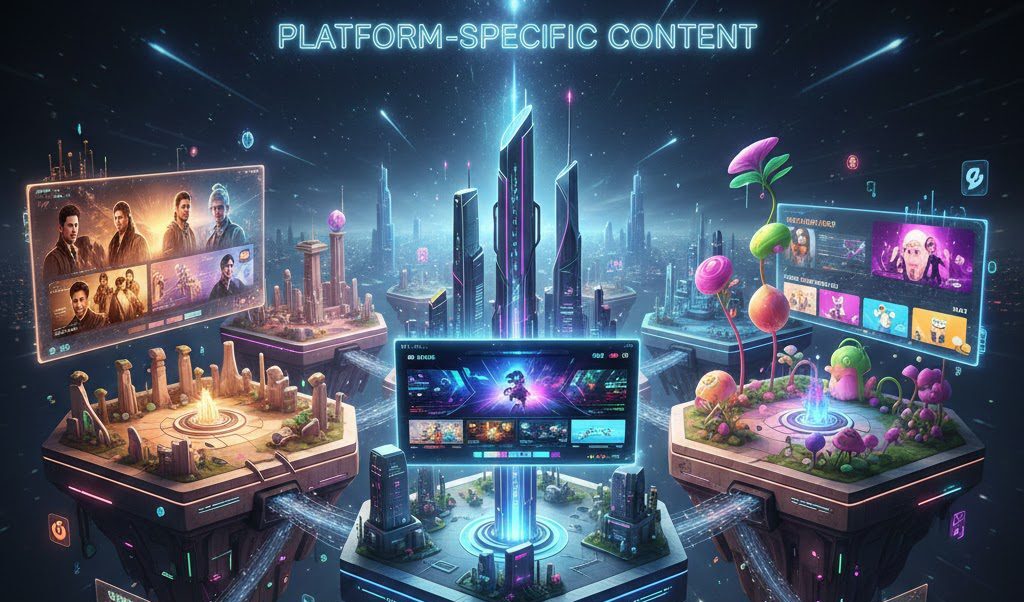Introduction
Your animation studio has poured creativity, time, and resources into producing fantastic animated content. Now comes the critical next step: ensuring it reaches the widest possible global audience and generates maximum revenue. For animation companies, producers, and distributors, developing effective strategies to sell animated series rights, successfully distribute animated film projects, and efficiently monetize animation catalog assets is paramount.
This involves navigating the complex world of international sales, understanding buyer needs, and leveraging the right channels, including a modern animation distribution platform or animation content marketplace for sellers. This guide will explore key strategies to help your animation company thrive in the global content licensing landscape.
Table of content
- Introduction
- Key-Takeaways
- Understanding the Global Animation Market: Opportunities for Sellers
- Step 1: Preparing Your Animated Content for Global Sales
- Step 2: Choosing the Right Channels to Distribute Animated Film & Series
- Step 3: Finding and Connecting with International Buyers
- Step 4: Pricing Your Animation and Negotiating Deals Effectively
- Step 5: Leveraging Online Animation Distribution Platform Solutions
- Step 6: Managing Rights and Building Buyer Relationships Post-Deal
- Conclusion
- FAQs
Key Takeaways
| Distribution & Sales Aspect | Core Strategy for Animation Companies | |
|---|---|---|
| Global Distribution Strategy | Develop a plan targeting key international territories and diverse platforms (TV, SVOD, AVOD, etc.). | |
| Preparing Content for Sale | Ensure high-quality master materials, compelling marketing assets, and clear chain of title documentation. | |
| Identifying and Reaching Buyers | Utilize industry markets, sales agents/distributors, direct outreach, and online B2B marketplaces like Vitrina. | |
| Negotiating Deals | Understand content valuation, be flexible with licensing models, and protect your IP. | |
| Leveraging an Animation Distribution Platform | Digital platforms offer efficient ways to showcase catalogs, connect with global buyers, and manage availabilities. | |
| Long-Term Monetization | Strategically manage rights and windows to monetize animation catalog assets over their full lifecycle. | |
| Further Learning | For a comprehensive overview, explore our Ultimate Guide to Animated Content Licensing. | |
Maximize Revenue from Your Animation Catalog?

Understanding the Global Animation Market: Opportunities for Sellers

The global demand for animated content is booming. From kids’ series and family features to adult animation and anime, platforms worldwide are constantly seeking fresh, engaging animation to attract and retain audiences. For animation companies, this presents immense opportunities to sell animated series rights and distribute animated film projects far beyond their domestic borders. Understanding the nuances of different international markets – their preferred genres, platform landscapes (e.g., strength of local broadcasters vs. global SVODs), and cultural sensitivities – is the first step in crafting a successful global sales strategy and effectively using any animation distribution platform.
Key Market Segments for Animation:
- Children’s Television Channels (Linear & VOD): Still a primary buyer for pre-school and kids’ animation.
- Global and Regional SVOD Platforms: Major acquirers of all types of animation, often seeking exclusive rights for original or high-profile content.
- AVOD and FAST Channels: Growing market for library animated content and some non-exclusive new content.
- Theatrical Distributors (for films): For animated features with potential for cinema release in various territories.
- Educational Platforms & Institutions: For animation with learning value.
- Mobile Platforms & In-Flight Entertainment: Niche but relevant for certain types of animated content.
Knowing these segments helps tailor your approach to monetize animation catalog assets.
Researching International Demand:
Before actively trying to sell animated series rights, research:
- Which territories have a strong appetite for your specific animation genre and style?
- What are the key broadcasters and platforms in those territories?
- Are there any cultural adaptation needs to consider for specific markets?
- What are the typical licensing fee ranges or preferred deal models in those regions?
Market intelligence, obtainable through industry reports or platforms like Vitrina, is invaluable here.
| Market Factor | Importance for Animation Sellers | Actionable Insight |
|---|---|---|
| Platform Diversity (TV, SVOD, AVOD) | Multiple avenues for licensing different rights. | Develop a windowing strategy to target various platforms sequentially or simultaneously. |
| Regional Genre Preferences | Helps target sales efforts effectively. | Knowing if a territory has high demand for anime vs. pre-school content. |
| Buyer Budgets & Models | Informs pricing strategy and deal structure expectations. | Understanding if a buyer prefers flat fees, MGs, or revenue share. |
Step 1: Preparing Your Animated Content for Global Sales
Before you can effectively sell animated series rights or distribute animated film projects, meticulous preparation is key. International buyers have high standards, and presenting your content professionally with all necessary materials and legal clearances in order will significantly enhance your chances of closing deals. This preparation phase is crucial for any animation company aiming to succeed on a global animation distribution platform or in direct sales.
Essential Sales and Marketing Materials:
Create a compelling package to showcase your animation:
- High-Quality Screeners: Full episodes or film, easily accessible via secure online links.
- Engaging Trailers/Sizzle Reels: Tailored for different types of buyers if necessary.
- Professional Key Art and Stills: Visually appealing imagery.
- Detailed Synopsis & Series/Film Bible: Including loglines, character descriptions, episode summaries, creator bios, and any existing awards or festival recognition.
- One-Sheet: A concise summary of all key information for quick review by busy buyers.
Technical and Delivery Readiness:
Ensure you have:
- Broadcast/Platform-Quality Master Files: In various standard formats.
- Textless Backgrounds (Clean Masters): For easy localization of on-screen text and titles.
- Separate M&E (Music & Effects) Tracks: Essential for foreign language dubbing. This is critical to monetize animation catalog assets internationally.
- Dialogue Lists, Scripts, and Music Cue Sheets: Accurate and complete for translation, dubbing, subtitling, and music clearance purposes.
- Existing Language Versions: If you already have dubs or subs in key languages (e.g., English, Spanish, French), highlight this as it adds value.
Legal and Rights Clearance:
This is non-negotiable for any reputable buyer:
- Clear Chain of Title: All documentation proving you own or control all necessary rights to license the content globally (including underlying IP, music, talent).
- Errors & Omissions (E&O) Insurance: Many buyers will require this.
- Music Clearances: Ensure all music is fully cleared for all intended territories and media.
Being legally prepared will make your content much more attractive on any animation content marketplace for sellers.
| Preparation Area | Key Components for Sellers | Why It’s Critical |
|---|---|---|
| Marketing Package | Trailer, screener, key art, synopsis, one-sheet. | Makes a strong first impression, provides essential info to buyers. |
| Technical Assets | Masters, M&E, scripts, dialogue lists. | Enables smooth delivery and localization by the buyer. |
| Legal Clearance | Chain of title, E&O, music clearances. | Proves licensability, protects buyer from legal issues. Essential to sell animated series rights. |
Step 2: Choosing the Right Channels to Distribute Animated Film & Series
Once your animated content is prepared for the market, the next strategic decision is how to actually reach potential buyers and distribute animated film and series projects. There are several channels available, each with its pros and cons. Animation companies often use a mix of these approaches to maximize their global reach and effectively sell animated series rights. Your choice will depend on your resources, network, the type of content you have, and your overall sales goals. Finding the right animation distribution platform or partner is key.
Direct Sales to Platforms/Broadcasters:
- Approach: Your in-house sales team directly contacts and negotiates with acquisition executives at TV channels, SVOD/AVOD services, and other platforms.
- Pros: Retain full control over deals, keep 100% of license fees (minus sales costs).
- Cons: Requires significant industry contacts, market knowledge, time, and resources for outreach and negotiation. Can be challenging for smaller studios to get attention from major global buyers.
Working with Traditional Distributors or Sales Agents:
- Approach: You partner with a specialized animation distributor or sales agent who represents your content to their network of buyers in specific territories or globally.
- Pros: Leverage their existing buyer relationships, market expertise, attendance at major markets, and negotiation skills. They often handle contract administration and material delivery.
- Cons: They take a commission (typically 15-35%) on license fees. You relinquish some control over the sales strategy. Choosing the right, reputable partner is crucial.
Utilizing Online B2B Content Marketplaces:
- Approach: List your animated content on a digital animation content marketplace for sellers like Vitrina. These platforms connect sellers directly with a global pool of verified content buyers.
- Pros: Increased global visibility 24/7, cost-effective way to reach many buyers, targeted exposure (buyers search for specific needs), direct communication tools, often provide data insights. Great for helping monetize animation catalog assets.
- Cons: Requires creating compelling listings and actively engaging with the platform and interested buyers. Success depends on the platform’s reach and buyer quality.
Hybrid Approaches:
Many animation companies use a combination: direct sales in key domestic or familiar markets, sales agents for challenging international territories, and online marketplaces to supplement reach and discover new leads.
| Distribution Channel | Primary Advantage for Seller | Key Consideration |
|---|---|---|
| Direct Sales | Full control, no commission. | Requires strong network and sales resources. |
| Sales Agent/Distributor | Market expertise, established buyer relationships. | Commission fees, choosing the right partner. |
| Online Marketplace (e.g., Vitrina) | Global reach, cost-effective marketing, direct buyer connections. | Requires active platform engagement and quality listings. |
Make Cincinnati Your Next Filming Destination!

Step 3: Finding and Connecting with International Buyers
Regardless of the distribution channels you choose, proactively finding and connecting with the right international buyers is essential to successfully sell animated series rights or distribute animated film projects globally. This involves targeted research, effective networking, and compelling pitching. Your goal is to identify platforms and broadcasters whose audience and programming needs are a strong match for your animated content, ensuring your pitches are relevant and well-received. An efficient animation distribution platform strategy relies on these connections.
Researching and Identifying Target Buyers:
- Define Your Ideal Buyer Profile: Based on your content’s genre, target age group, and style, what types of channels or platforms would be the best fit (e.g., a kids’ SVOD, a family-focused broadcaster, an adult animation AVOD service)?
- Territory Focus: Which international markets show strong demand for your type of animation?
- Use Industry Databases and Directories: Resources that list broadcasters, streaming services, and their acquisition executives.
- Leverage Online Marketplaces: Platforms like Vitrina allow you to see profiles of active buyers and their content needs, and sometimes even receive “requests for content.”
- Track Industry News and Deals: See who is acquiring what type of content. This can highlight potential leads.
Effective Networking and Pitching:
- Attend Key Content Markets: Schedule meetings in advance. Have your pitch and materials polished.
- Personalized Outreach: When pitching directly (e.g., via email), personalize your message. Show that you understand the buyer’s platform and why your content is a good fit. Avoid generic mass emails.
- Concise and Compelling Pitch: Clearly articulate your content’s unique selling points (USPs), target audience, and potential value to the buyer. Have your trailer/screener link ready.
- Follow Up Professionally: If a buyer expresses interest, follow up promptly but don’t be overly aggressive.
- Build Relationships: Content licensing is often relationship-driven. Aim to build long-term connections with buyers, even if a specific deal doesn’t happen immediately.
This is a core part of any strategy to monetize animation catalog assets.
| Buyer Connection Strategy | Key Action for Seller | Expected Outcome |
|---|---|---|
| Market Research | Identify platforms/channels aligning with content. | Targeted and relevant pitching. |
| Industry Event Networking | Schedule meetings, deliver concise pitches. | Generate interest, build relationships. |
| Online Platform Engagement | Create strong listings, respond to buyer inquiries. | Connect with global buyers, receive qualified leads. |
Step 4: Pricing Your Animation and Negotiating Deals Effectively
Once you’ve connected with interested buyers, the critical phase of pricing your animated content and negotiating the terms to sell animated series rights or distribute animated film projects begins. This requires a blend of market knowledge, strategic thinking, and effective communication. Your goal as a seller is to achieve fair market value for your content while building a sustainable partnership with the licensee. Understanding different licensing models and key negotiation points is vital for maximizing revenue from your animation distribution platform efforts.
Determining the Right Price for Your Animation:
- Market Comparables (“Comps”): Research what similar animated content (genre, quality, length, target audience) has licensed for in specific territories and on similar platforms.
- Production Budget & ROI Goals: While not the sole determinant for buyers, your production costs and desired return on investment will inform your minimum acceptable price.
- Scope of Rights: Broader rights (e.g., exclusivity, multiple platforms, long term, large territory) should command higher fees.
- Content’s Track Record: Existing popularity, awards, or brand recognition increases value.
- Buyer’s Platform Reach & Potential: A larger platform with greater reach might pay more.
Key Negotiation Points for Animation Sellers:
- License Fee/Financial Model: Propose a clear model (flat fee, MG + royalty, revenue share). Be prepared to justify your asking price and discuss alternatives.
- Payment Schedule: Aim for favorable terms (e.g., significant portion upfront or upon delivery).
- Grant of Rights: Be precise. Avoid granting overly broad rights that could limit future licensing opportunities. Clearly define platforms, languages, and any holdbacks.
- Territory and Term: Define these clearly. Consider shorter terms for rapidly evolving markets or platforms to allow for re-negotiation later.
- Exclusivity: If granting exclusivity, ensure the compensation reflects its value.
- Approval Rights: For marketing materials or significant edits (if allowed).
- Reporting and Audit Rights (for royalty deals): Ensure transparent reporting from the licensee.
Successfully navigating these points is crucial to monetize animation catalog assets.
| Negotiation Element | Seller’s Objective | Tactical Consideration |
|---|---|---|
| License Fee | Maximize upfront and overall revenue. | Anchor reasonably high, justify with comps/value, be open to performance kickers. |
| Rights Granted | Retain maximum flexibility for other deals. | Grant specific, well-defined rights; resist overly broad requests without due compensation. |
| Exclusivity | Secure premium for exclusive rights. | Limit scope/duration of exclusivity if possible, or ensure high fee. |
Step 5: Leveraging Online Animation Distribution Platform Solutions
In the digital age, online B2B marketplaces have emerged as powerful animation distribution platform solutions for sellers. These platforms, especially those enhanced by AI like Vitrina, offer animation companies unprecedented global reach and efficiency in their efforts to sell animated series rights and distribute animated film projects. By creating a centralized hub for showcasing content and connecting with verified buyers, these digital tools can significantly augment traditional sales efforts and help you monetize animation catalog assets more effectively. They function as a dynamic animation content marketplace for sellers.
How Online Marketplaces Empower Animation Sellers:
- Global Visibility: List your animated films and series to be discovered by a worldwide network of content acquirers, including broadcasters, SVOD/AVOD platforms, and distributors.
- Targeted Exposure: Buyers use specific search criteria, meaning your content is more likely to be seen by those actively looking for what you offer.
- Cost-Effective Marketing: Reach a broad international audience without the significant expense of attending every physical market.
- Streamlined Information Sharing: Easily upload and manage trailers, screeners, synopses, key art, and rights availability information in one place.
- Direct Connection with Buyers: Many platforms facilitate direct messaging and expressions of interest, speeding up initial contact.
- Data Insights: Some platforms provide analytics on which buyers are viewing your listings, what types of content are in demand, and general market trends, helping refine your sales strategy. Vitrina’s Project Tracker, for instance, offers valuable industry intelligence.
- Managing Availabilities: Tools to clearly indicate which rights are available for which territories and windows.
Best Practices for Using These Platforms:
- Create Rich, Detailed Listings: The more comprehensive your content information, the easier it is for buyers to evaluate.
- Use High-Quality Visuals: Professional key art and engaging trailers are essential.
- Keep Information Up-to-Date: Regularly update your catalog with new titles and changes in rights availability.
- Be Responsive: Promptly reply to inquiries from potential buyers.
| Online Platform Feature | Benefit for Animation Seller | Impact on Sales Process |
|---|---|---|
| Global Buyer Database | Access to a wider, more diverse pool of potential licensees. | Increased international sales opportunities. |
| Targeted Content Showcase | Content highlighted to buyers with matching needs. | More qualified leads, higher conversion potential. |
| Efficient Communication Tools | Faster initial contact and follow-up with buyers. | Accelerated deal initiation. |
Step 6: Managing Rights and Building Buyer Relationships Post-Deal
Successfully closing a deal to sell animated series rights or distribute animated film projects is a significant achievement, but the work of an effective animation company doesn’t stop there. Diligent post-deal management – including contract administration, rights tracking, and nurturing buyer relationships – is crucial for long-term success and to continuously monetize animation catalog assets. Strong relationships can lead to repeat business and smoother future negotiations, while meticulous rights management ensures you capitalize on all future opportunities for your content on any animation distribution platform.
Key Post-Deal Responsibilities for Sellers:
- Contract Administration: Securely store all signed agreements. Track key dates such as license start/end dates, payment schedules, and renewal options.
- Material Delivery: Ensure timely and accurate delivery of all specified master files, M&E tracks, scripts, and marketing assets to the licensee.
- Royalty/Revenue Share Management (if applicable): Diligently track and reconcile financial statements received from licensees. Follow up on payments. Ensure you have audit rights and consider exercising them if discrepancies are suspected.
- Managing Availabilities (“Avails”): Maintain a comprehensive and up-to-date database of all licensed rights for each title – who has what rights, for which territories, on which platforms, and for how long. This is vital for identifying when rights become available again for re-licensing.
- Licensee Relationship Management: Maintain open and professional communication with your buyers. Address any issues promptly. Check in periodically to see how the content is performing and discuss future opportunities.
- Exploiting Subsequent Windows/Rights: As initial license terms expire, proactively seek new licensing opportunities for those rights in subsequent windows or with new buyers.
| Post-Deal Activity | Importance for Animation Seller | Best Practice |
|---|---|---|
| Contract & Rights Tracking | Ensures compliance, identifies future availabilities. | Use rights management software or a detailed internal database. |
| Financial Management | Ensures accurate and timely receipt of all due payments. | Regularly reconcile statements, schedule payment follow-ups. |
| Buyer Relationship Building | Fosters trust, encourages repeat business and renewals. | Maintain proactive communication, offer good service. |
Conclusion
For animation companies, producers, and distributors, maximizing the global reach and financial success of your content hinges on robust strategies to sell animated series rights and effectively distribute animated film projects. This involves meticulous preparation of content and sales materials, a targeted approach to identifying and connecting with international buyers, skillful negotiation, and leveraging modern tools like an animation distribution platform or animation content marketplace for sellers. By understanding market dynamics, choosing the right distribution channels, and diligently managing rights post-deal, you can significantly enhance your ability to monetize animation catalog assets and new productions on a global scale.
The demand for quality animation is worldwide. With a strategic approach, even smaller studios can find significant success. Platforms like Vitrina are designed to empower sellers by providing global visibility and facilitating connections with buyers. To understand the broader context of licensing, our Ultimate Guide to Animated Content Licensing offers valuable comprehensive insights.
Ready to take your animation to a global audience? Explore Vitrina to showcase your catalog on a leading animation content marketplace for sellers and connect with international buyers today!
Frequently Asked Questions
Some text
Research market comparables for similar series (genre, target audience, quality, number of episodes) in the specific territory and for the specific rights being offered. Consider your production costs, but ultimately the market dictates the price. Factors like exclusivity, term length, and brand strength also play a big role.
An M&E (Music and Effects) track is an audio mix of your animation that contains all the music and sound effects, but *without* the original language dialogue. It is absolutely essential for international sales because it allows buyers in foreign territories to easily create a dubbed version in their local language by adding a new dialogue track on top of your M&E.
It depends on your strategy and the film’s potential. Exclusive deals typically command higher license fees but limit your reach to that one platform/territory for the term. Non-exclusive deals allow broader distribution (and potentially more aggregate revenue if licensed widely) but at lower individual fees. Often, a mix is used: exclusivity for key early windows/territories, and non-exclusive for later library windows or smaller markets.




























